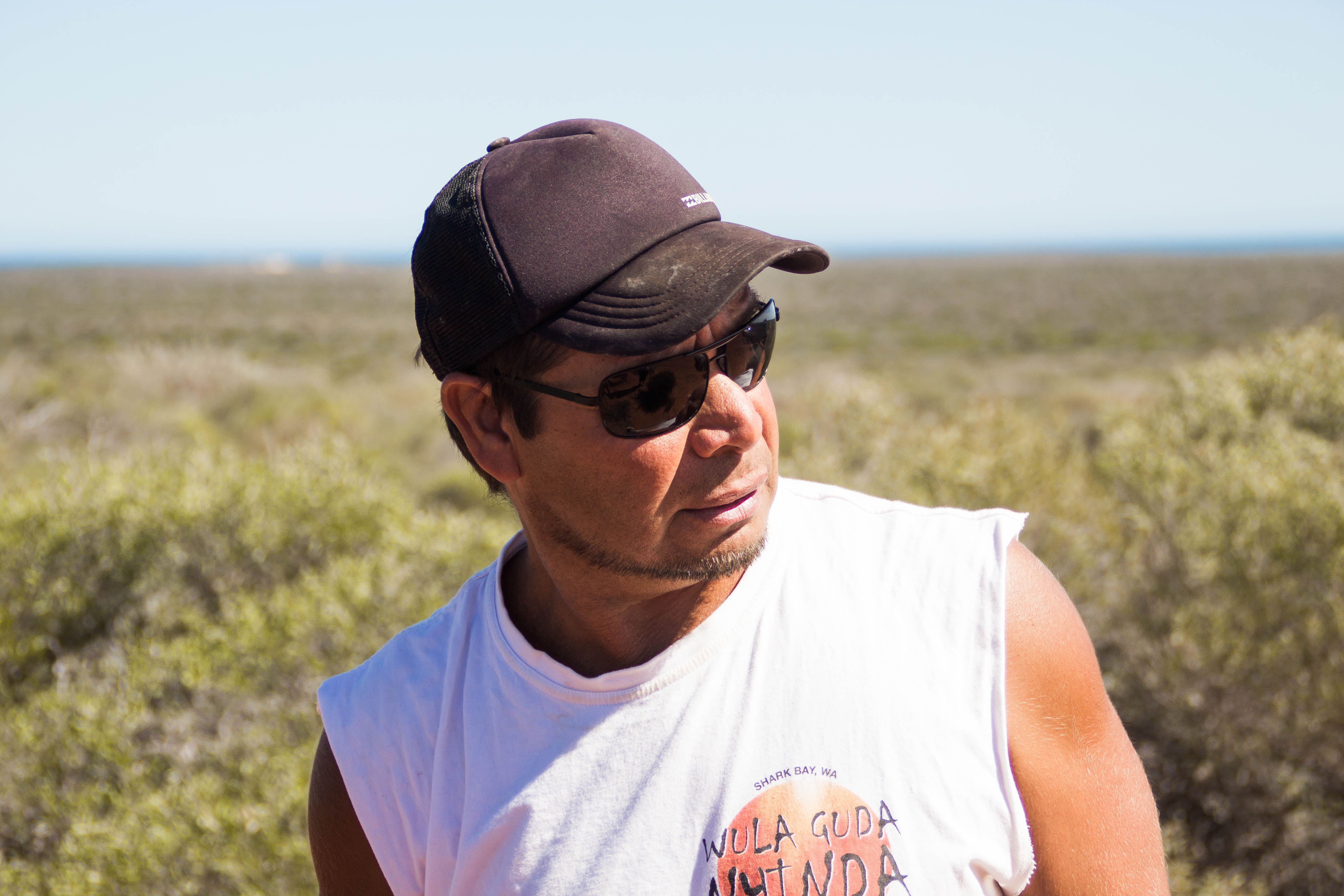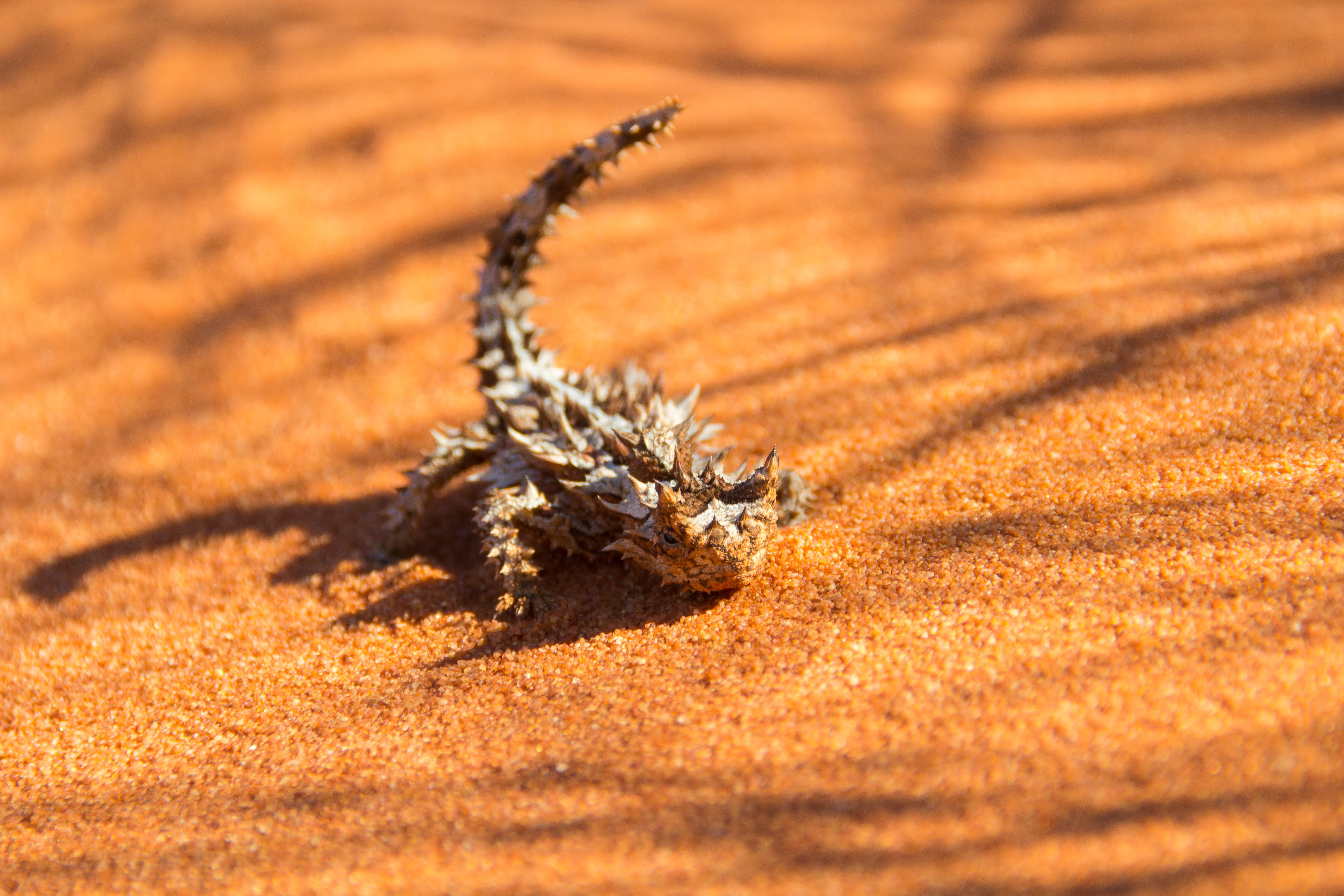Welcome to this series of articles about a roadtrip in Western Australia. There is a lot of ways to do the west coast of course. We did a short roadtrip, 18 days in a campervan and from today and onwards you will be able to follow our trip through my articles and photos. This is part 5. Enjoy!
Part 2: Playing dolphin in famous sunset>>
Part 3: Amazing red gorges in Kalbarri National Park>>
Part 4: Shell Beach – a beach only made out of shells>>
In the map below you can see where we have been.
Wild Indo-Pacific bottlenose dolphins, sharks, stingrays and a mile-long beach consisting only of seashells. ”Shark Bay” and the National Park ”Francois Peron” in Western Australia has much to offer if you want to experience the fascinating animals and amazing scenery.
Läs den här texten på svenska här >>
We sit in the red sand at the top of one of the dunes looking out over the pattern of turquoise and dark blue water. In the foreground and background rests the red sand dunes. As beautiful eyelids they surround the big lagoon. Our guide Capes has shown us the way here with kayak. We are in the National Park ”Francois Peron” in Western Australia.
”This is my meditation spot, I paddle here to get away from the stress in society”, says Capes, where he sits with his feet buried in the red sand and serenely gazing out over the landscape.
The park is so beautiful it hurts. There is something special with all the colors and contrasts. Almost like a painting. The red dunes, white sand by the beach, the water with several shades of blue, green bushes and the spectacle of clouds in all its forms against the light blue sky.
Follow ”A different life on Facebook” to not miss next part in the series. Then I will write about are meeting with the Indo-Pacific bottle nose dolphin:
Down there, the shallow lagoon is full of life. There swims smaller sharks, sting rays and dugongs. Francois Peron National Park is part of ”Shark Bay” as the area came to be called. Shark Bay is known for having the earth’s largest population of Dugongs. 70 percent of all Dugongs on the planet lives here because of the seaweed that grows in the two shallow bays.
Shark Bay is the world’s largest known continuous area of seagrass, with seagrass meadows covering more than 4000 square meters of the bay.
Unfortunately, we can not spot any seaweed-eating Dugongs today but several small fast sharks and a really big stingray majestically glides under our kayak. The water is no deeper than knee height. Pleasurable chills creeping down the spine while the sun is shining high in the sky.
I let the paddle quietly cut through the water again and gives the kayak speed with sight on the other side of the lagoon. Before me paddles Capes, he’s looking fore more animals to show us.
Capes know incredibly much about the animals and nature here. He is Aboriginal origin and grew up in the area around Shark Bay. Now he runs his company to take tourists to the beautiful surroundings and learn besides the Aboriginal history and culture also all about the animals, plants, bushes and trees.
My kayak glides silently up the beach and the only thing I hear is the bird ”Oystercatcher”. It casts a beautiful sound. Capes step out of the kayak barefoot and takes the lead in the sand. Suddenly we find small traces. A thorny dragon has passed here. We follow the tracks, and soon we find the little rascal, enjoying the sun. When it realizes that we are there the thorny dragon freezes and stands completely still to avoid detection. Cape takes the opportunity to tell us a aboriginal urban legend about the thorny dragon.
”One time it was a beautiful lizard. But it was very greedy and ate lots of berries. Mother Nature then said: If you continue to take too many of the berries, you will be punished for not respecting nature. The thorny dragon continued eating berries and was punished with spikes all over his back and a slow walk for not show respect to nature.
Capes have lots of little stories from his childhood. For Aborigines, it is extremely important to live close to the nature. That’s how Capes have grown up and now he wants to spread the way to look at our planet and nature for us and everyone else who comes here.
The day ends at sunset on the beach, we unwind with food for our hungry stomachs. Capes serve a tasty buffet at one of the tables he had set up in the sand. Tortilla Wraps with ham, cheese, lettuce, beans, feta and couscous is obviously really nice after a day on the lagoon.
After dinner, before we go home to our beds, we stop in the outskirts of the national park. At a natural hot spring. The water is heated up from the earth and is closer to 40 degrees. Perfect for tired kayak muscles. I lean back my head and above me – the universe. The most clearly visible constellation is ”the Southern Cross”. It just… beautiful.
See all pictures below:
[metaslider id=2543]
WHERE TO STAY?
The only town in Shark Bay is Denham. In Denham you have a lot of options for accomodation. If you come in a caravan or a campervan or just need somewhere to put your tent there are parks for that. There are also some hotels. The town is just outside the national park and only 20 minute drive from Monkey Mia where you can spot dolphins.
FACTS ABOUT SHARK BAY
Gutharraguda (two waters) is the Aboriginal name of ”Shark Bay” and has been named after the two shallow bays located on each side of the long peninsula where Francois Peron National Park is located. The area is very special. Shark Bay is a UNESCO World Heritage Site and meet unique enough four out of ten claim to be listed by UNESCO.






